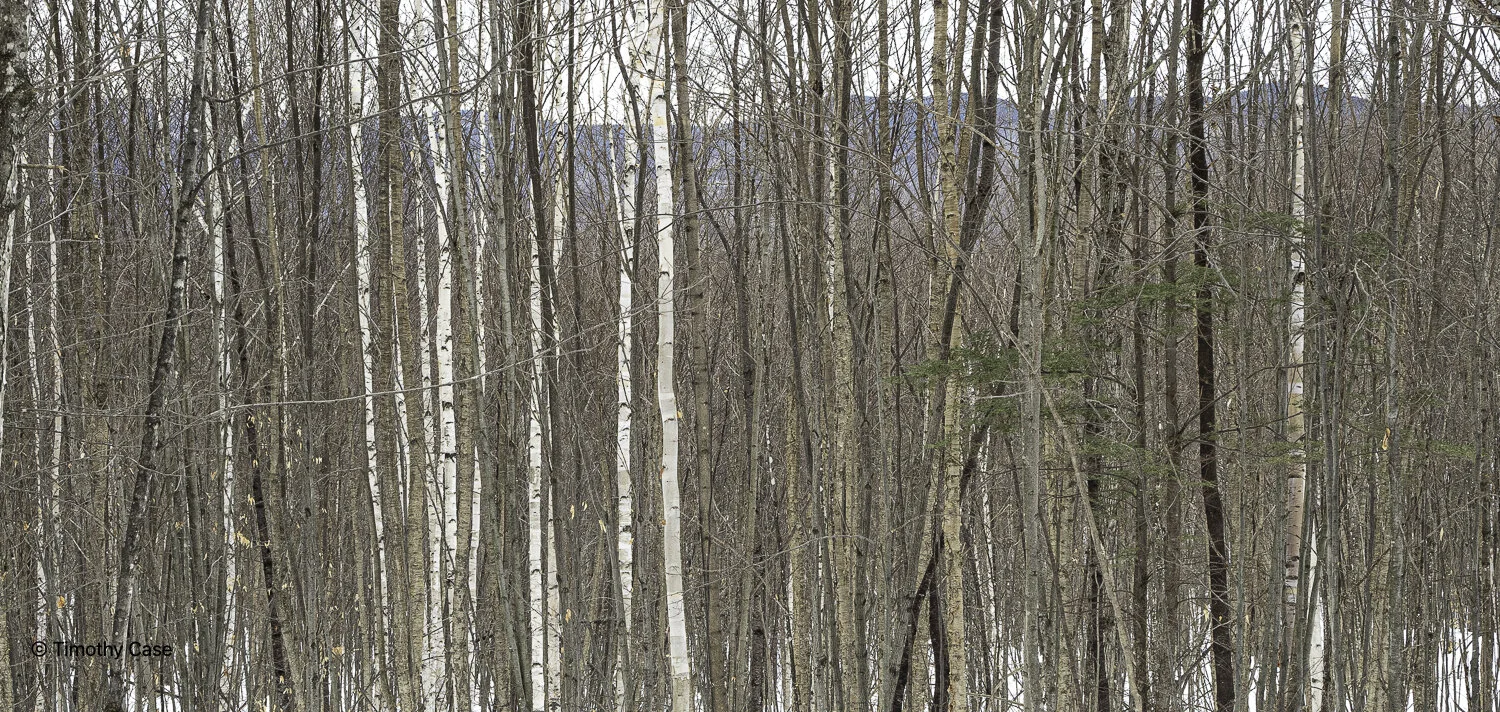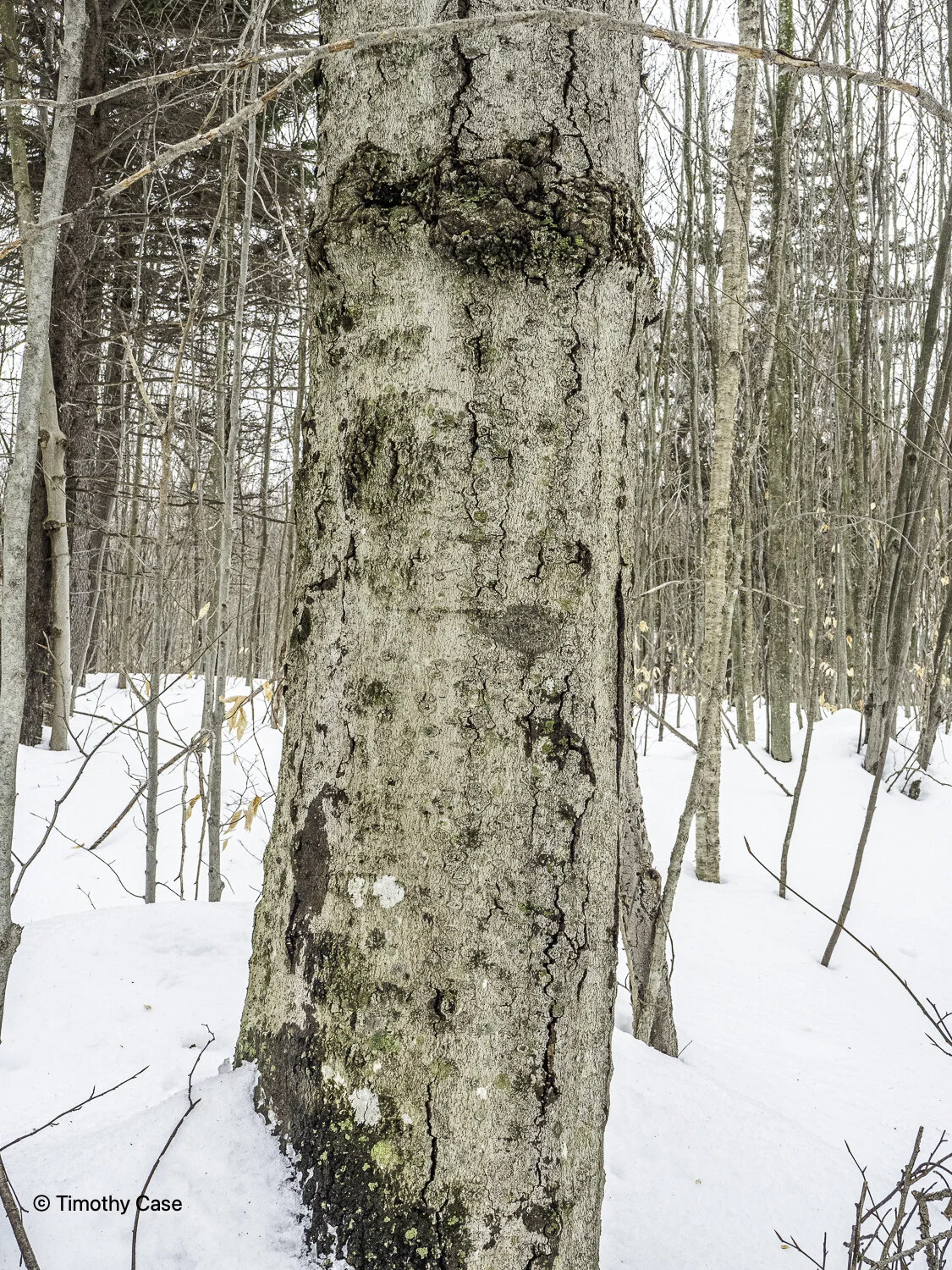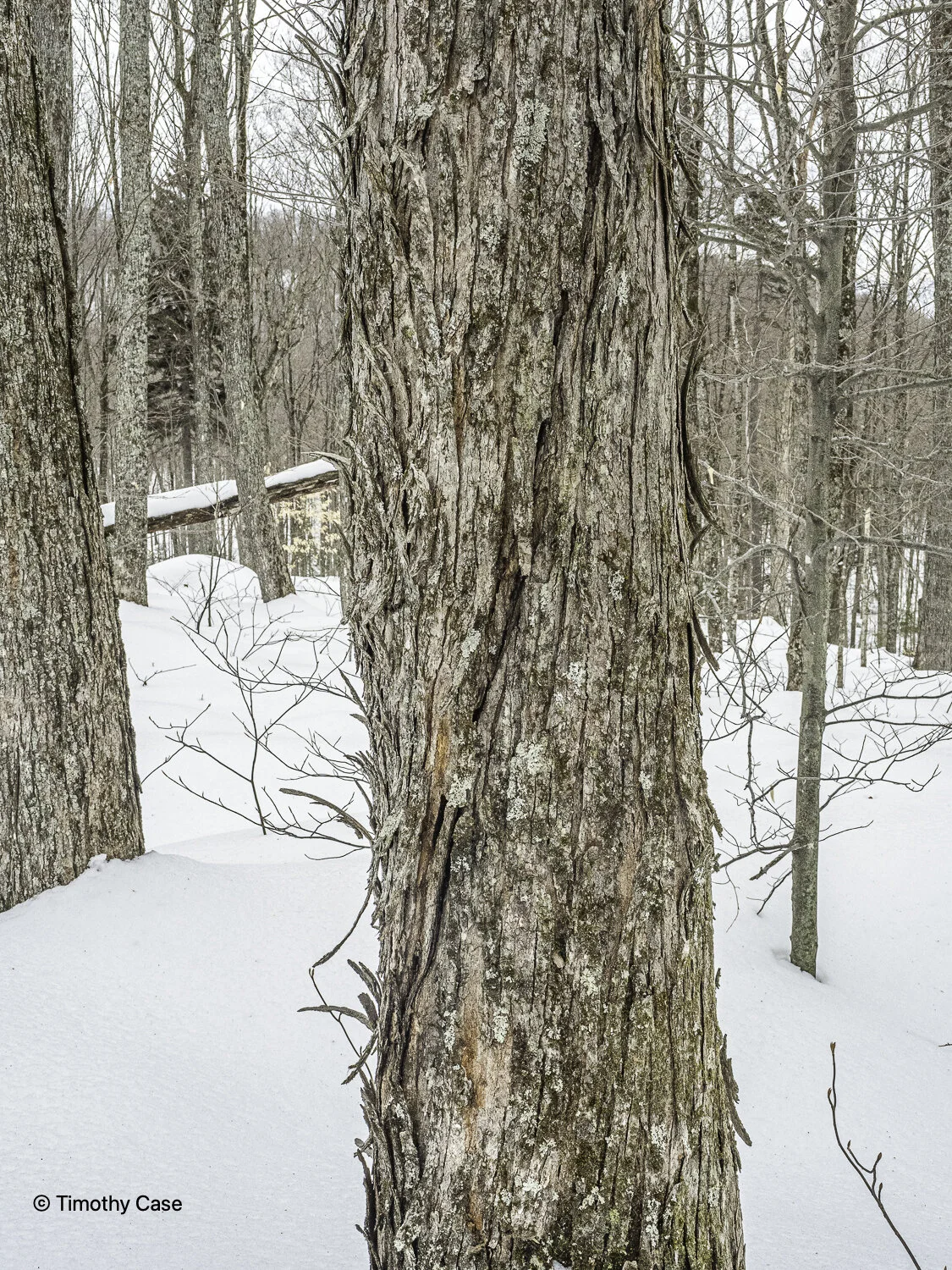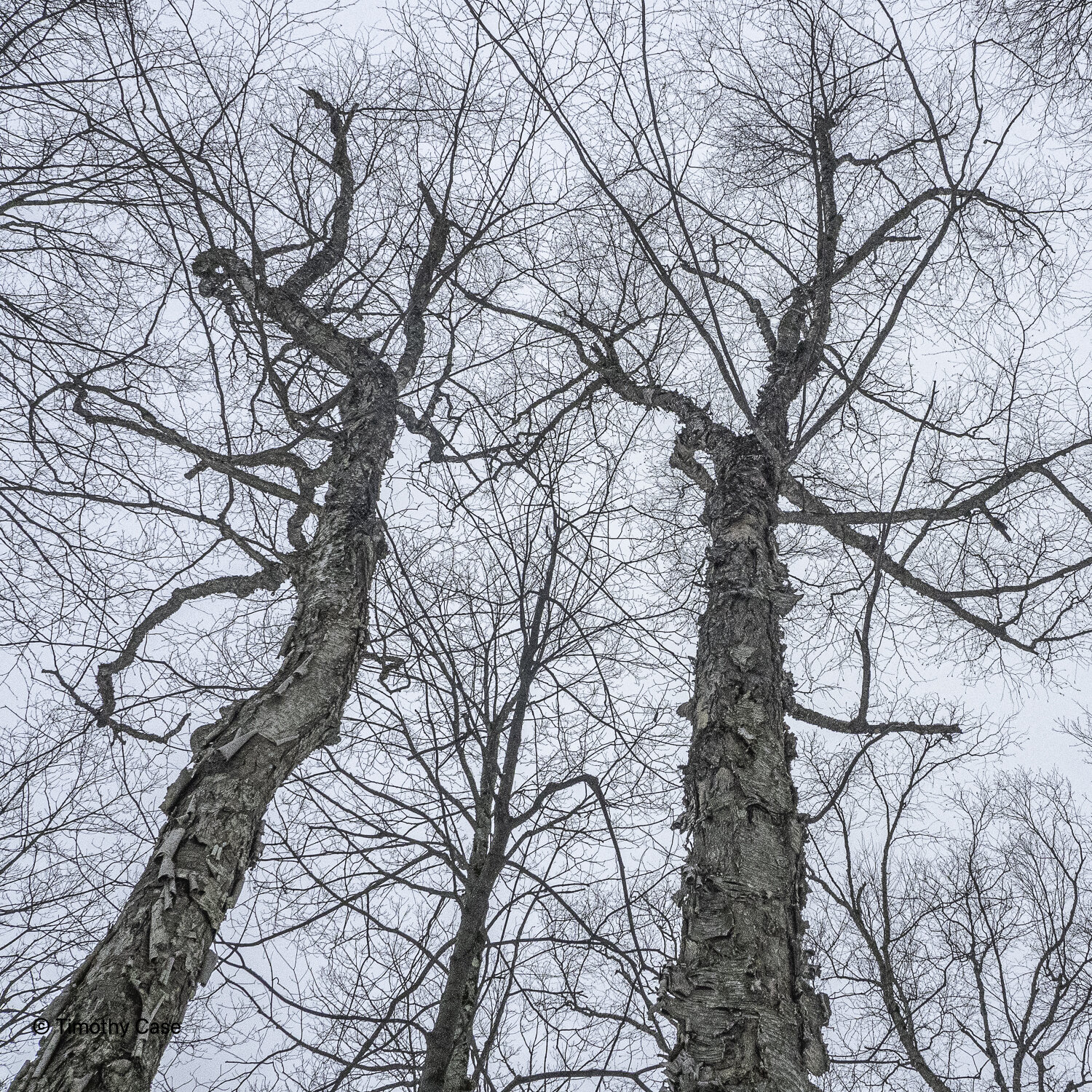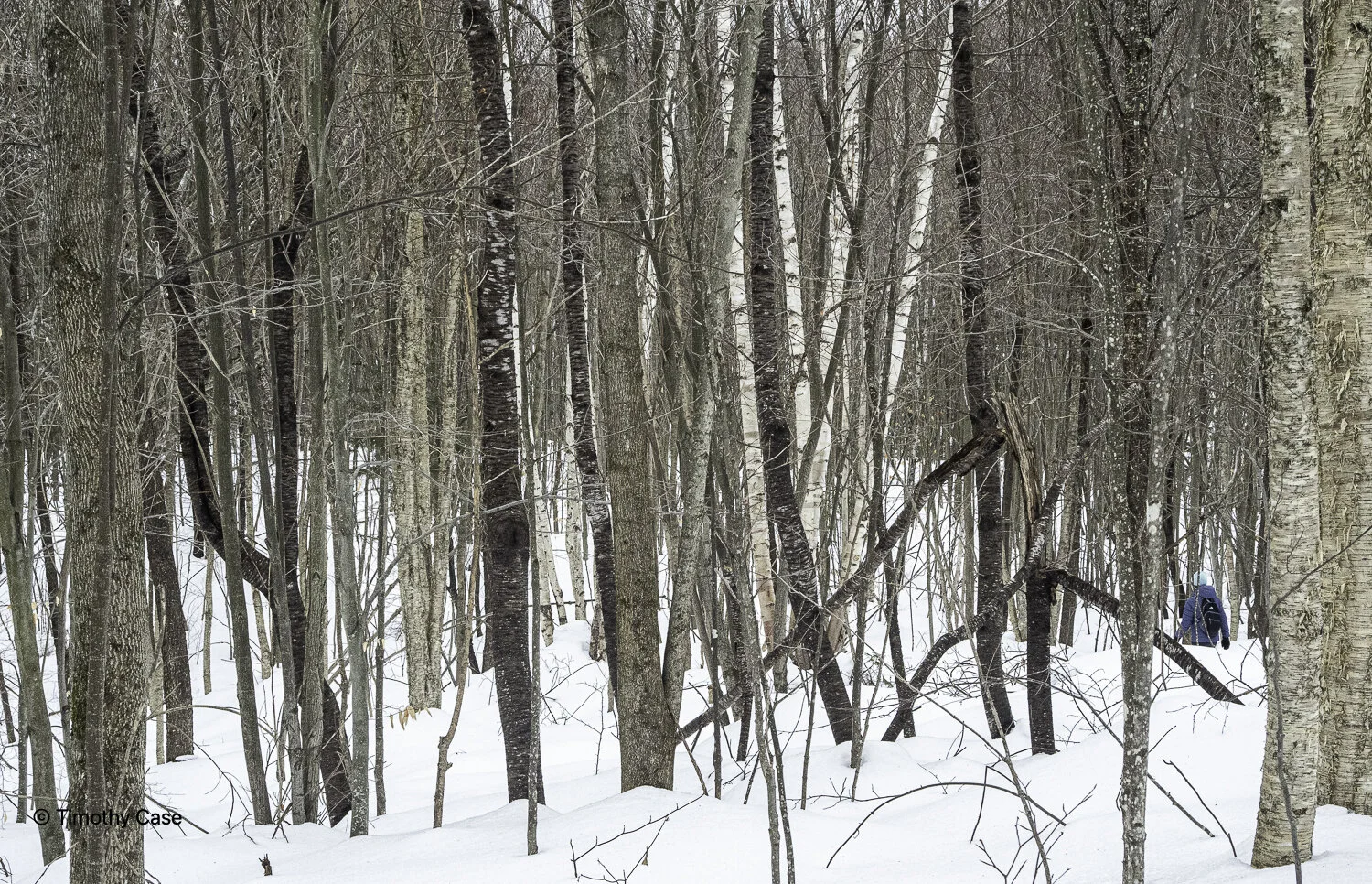Widow's Crossing Trail
March 1 arrived and the temperature in the mountains was in the low 40s. Until I gained more experience with the arrival of March in Vermont, I considered this month as early spring. In spite of warmer, shorter winters here due to climate change, March is still definitely winter in Vermont. While 40°F today up the mountain, tonight the valley forecast is 5°F.
The hike on the Widows Clearing Trail in the Moosalamoo National Recreation Area begins to ascend right from the trailhead, While the snow off trail is around 18-24” on the trail was packed down and we didn’t need showshoes. While there is no old growth in this area, the forest progression remains interesting and engaging. We began in a Hemlock forest that transitioned to one dominated by birches. The remainder was the more typical mix of deciduous and coniferous. If you pay attention, you’ll see that the forest isn’t nearly as uniform as it appears from a distance and you’ll see that the 100-150 year old forests around are differentiated and are comprised of smaller individual natural areas with slightly different physical environments and mixes of trees. Proximity to water, availability of light and the soil and subsoil composition influence what trees thrive where within even the managed Green Mountain National Forest.
This is Widow’s Clearing and I noticed that the Eastern Hemlocks along the front of the forest are dead and dying. I will return later to see if the trees are showing any evidence of Hemlock woolly adelgid.
Widow’s Clearing Trail, Moosalamoo National Recreation Area, 03-01-2021
Olympus M5II, Olympus 12-45 f/4
The black trunks are Black Birch. There are also Paper Birch, Yellow Birch, maybe one Grey Birch, and a few American Beech.
Widow’s Clearing Trail, Moosalamoo National Recreation Area, 03-01-2021
Olympus M5II, Olympus 12-45 f/4
As near as I can make out from the photo, the trees in front with dark bark are Eastern Hemlock, while the 3 trees with light bark are, from the left, Yellow Birch, Paper Birch and Grey Birch. There are also a lot of Sugar Maple, the most common tree in Vermont, American Beech, White Pine, and White Ash in these forests, as well trees from the oak, pine, spruce families.
Widow’s Clearing Trail, Moosalamoo National Recreation Area, 03-01-2021
Olympus M5II, Olympus 12-45 f/4
Probably a Sugar Maple,
Widow’s Clearing Trail, Moosalamoo National Recreation Area, 03-01-2021
Olympus M5II, Olympus 12-45 f/4
American Beech with beech bark disease caused by the beech scale insect, Cryptococcus fagisuga. A disconcertingly high number of the trees around here have the disease. The tree provides a lot of nutritious mast for wildlife and will impact the ecosystem as the beech die off.
Widow’s Clearing Trail, Moosalamoo National Recreation Area, 03-01-2021
Olympus M5II, Olympus 12-45 f/4
American Beech, but the specimen presents differently from those I usually see.
Widow’s Clearing Trail, Moosalamoo National Recreation Area, 03-01-2021
Olympus M5II, Olympus 12-45 f/4
Widow’s Clearing Trail, Moosalamoo National Recreation Area, 03-01-2021
Olympus M5II, Olympus 12-45 f/4
Another area of the forest with a variety of birches and American Beech.
Widow’s Clearing Trail, Moosalamoo National Recreation Area, 03-01-2021
Olympus M5II, Olympus 12-45 f/4


